How to plant bulbs in grass if you want a lawn filled with flowers next spring
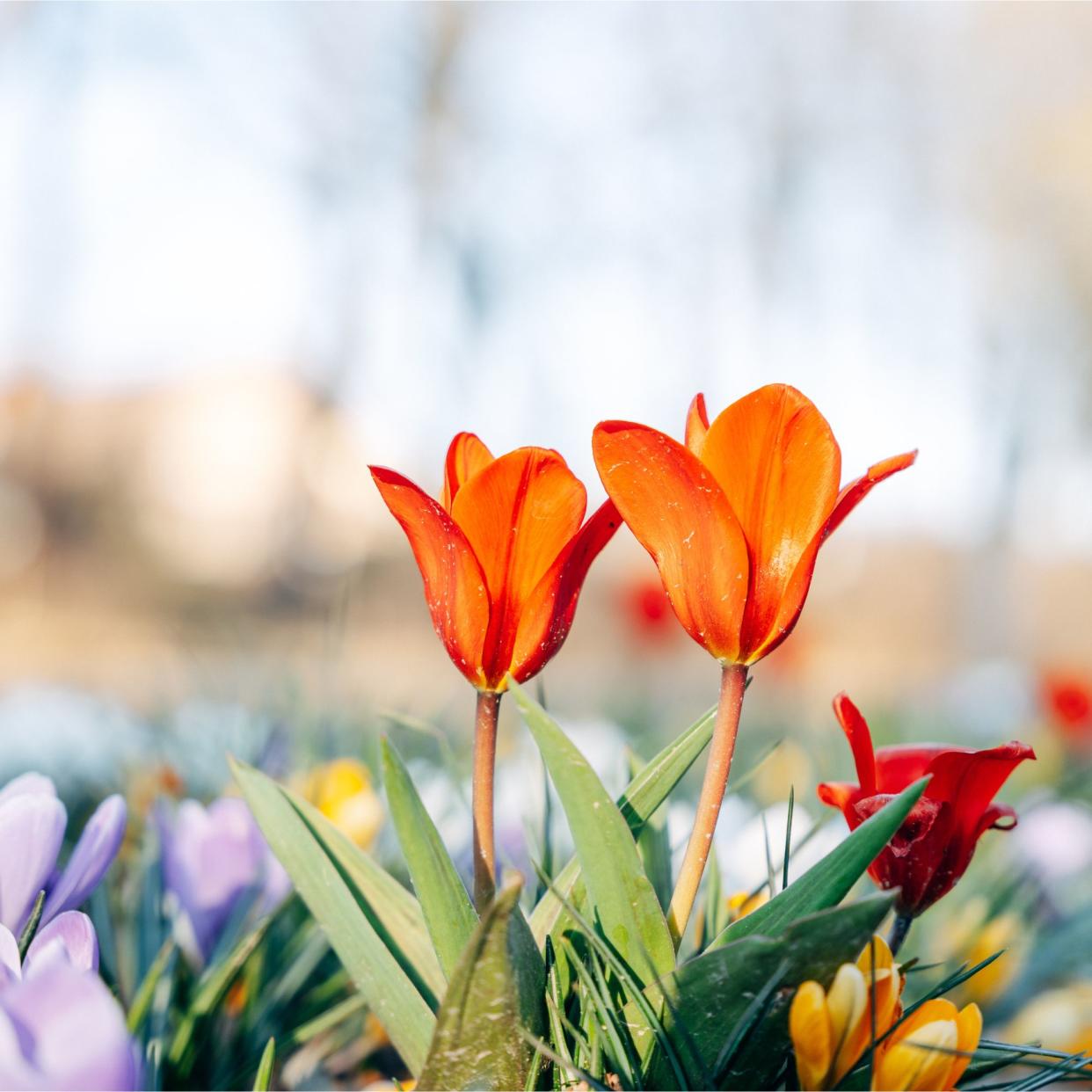
Wondering how to plant bulbs in grass? You're not alone; it's a question that's plagued many of us, in fact, since a TikTok post went viral, revealing what happened after a woman planted 600 bulbs in her garden.
The resulting rainbow of crocuses, alliums, tulips and more has easily made this one of the prettiest garden trends around.
With that in mind, then, we've put together an expert guide for anyone hoping to create the same (or a slightly more subtle version) effect in their own backyards come spring...
How to plant bulbs in grass
As mentioned already, a TikTok video of Beccy filling her lawn with bulbs went viral last year, amassing over 550,000 views and 21,000 likes.
Six months on, the gardener posted an update – another viral video showing the results as her lawn was taken over by a riot of gorgeous spring and winter flowers.
Check it out:
It's absolutely spectacular, isn't it? No wonder it's got so many people trying to figure out how to plant bulbs in grass so that they can recreate the magic in their own gardens.
And, if you are among those looking to create their very own bulb lawn, now is the time to start, as Helen Nyul, Group Head of Biodiversity, at Barratt Developments, explains:
'October is the ideal time to start planting your spring-flowering bulbs. Daffodils, hyacinths and tulips should all be planted in autumn so that you can look forward to a bright and beautiful garden in the spring.'
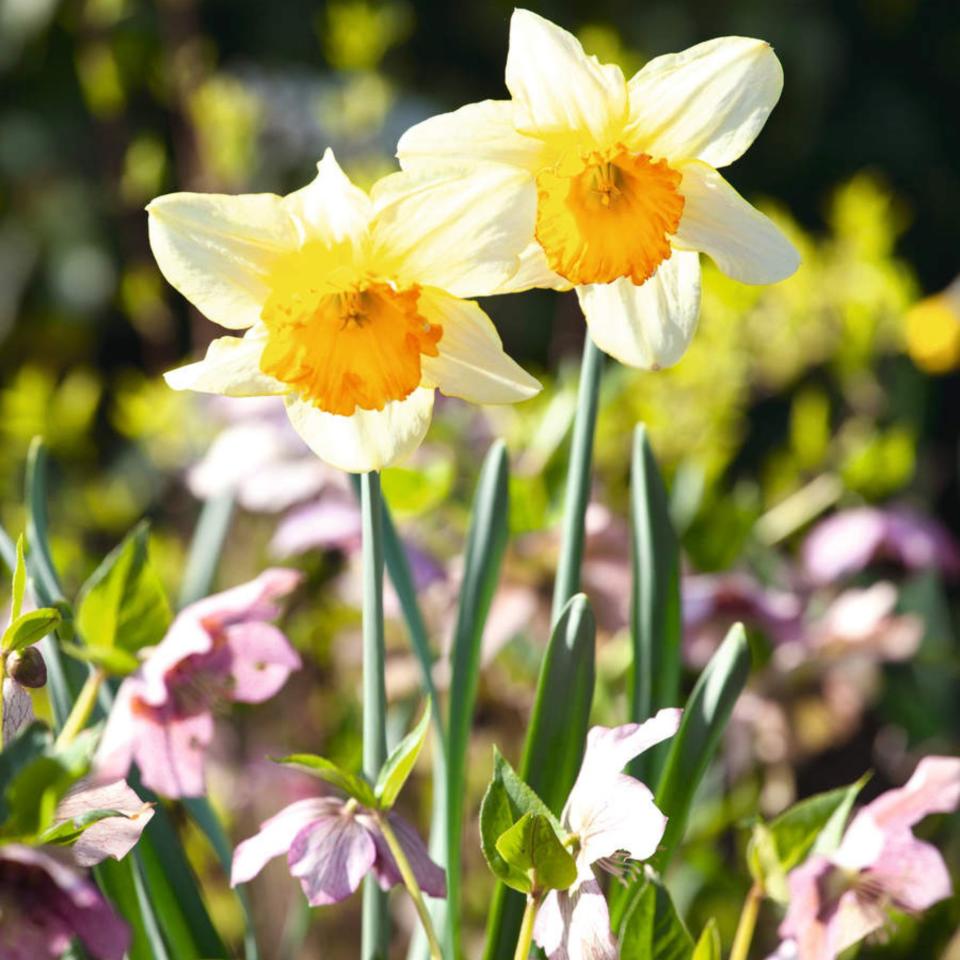
'Flowering bulbs in your lawn are a brilliant way to add interest in the garden from late winter right up to May,' agrees Dan Ryan, the parks and garden manager at Gatton Park.
While it will take a bit of work over the autumn to achieve the look, Dan adds that your efforts will be repaid tenfold.
'Many bulbs such as snowdrops, aconites, crocus, anemones and daffodils will slowly spread and continue to get better and better in subsequent years,' he insists, promising a low-maintenance spring display.
Consider us sold! With that in mind, then, let's dive into how to plant bulbs in grass for a (sorry) blooming lovely lawn.
What you will need:
To get started on this project, you will need:
A good selection of spring-flowering bulbs (the Spring Spectacular Colour Collection at Thompson & Morgan includes a generous selection of 200 bulbs)
A trowel, drill, or bulb auger
'Some varieties to consider include snowdrop Galanthus nivalis, which is the native snowdrop and looks great in large clumps,' says Dan. 'Crocus tommasinianus or tommies, which are the classic pale purple variety of crocus, or the white Crocus speciosus ‘Albus’, are also great choices.'
Dan also rates the dwarf daffodil varieties, as they tend to do well in shorter grass: think 'the ever-popular Narcissus tete tete, which has multiple bright yellow flowers, and Narcissus ‘Minnow’, which has a yellow inner and creamy white outer flower.'
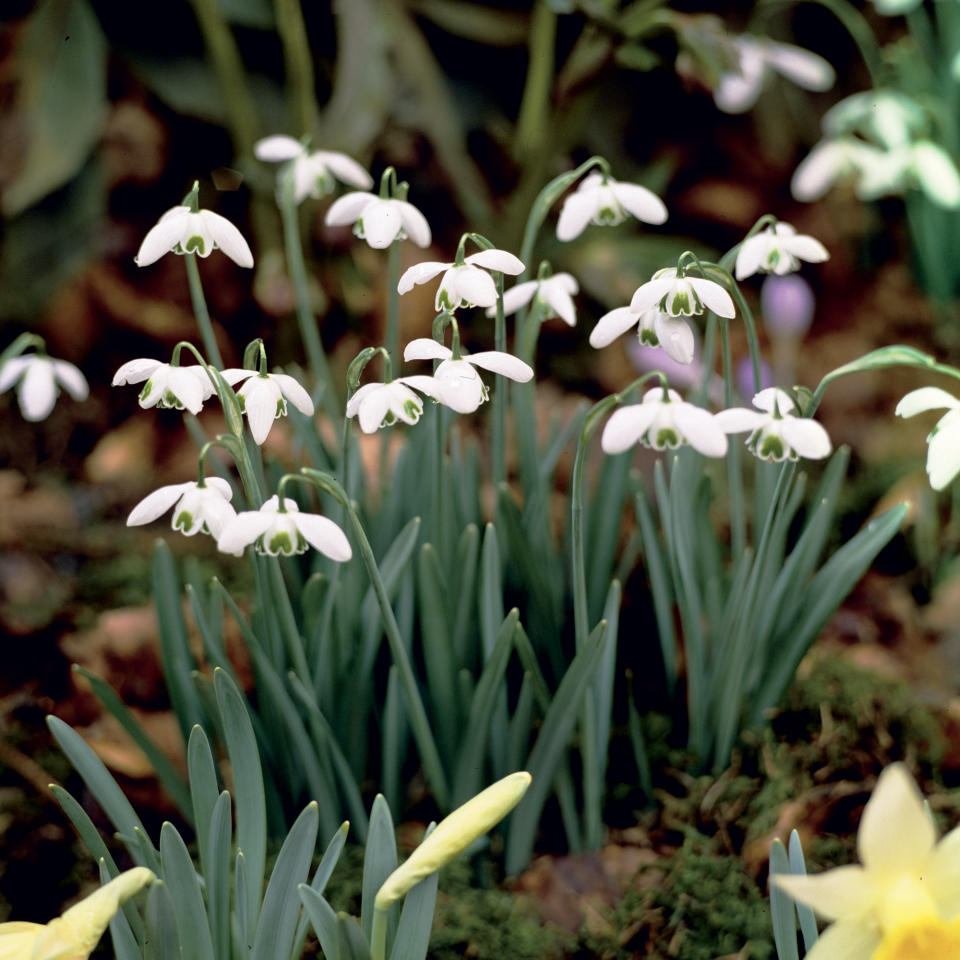
For tulips, Dan suggests hunting down species varieties such as Tulipa humilis or Tulipa tarda, as these 'tend to be good options for naturalising rather than the hybrid varieties'.
How-to guide:
Now you've got your tools to hand, it's time to get to work.
Here's how to plant bulbs in grass...
1. Choose a spot
Bulbs are very versatile and take well to growing in the ground as well as in a pot, but to grow a beautiful bulb lawn, you’ll want to plant them straight into the grass.
'The spot you choose should be sunny and protected from being trodden on so avoid planting them too close to garden paths,' says Helen.
'Planting them around your borders is a great way to ensure they won’t be walked over while they’re growing.'
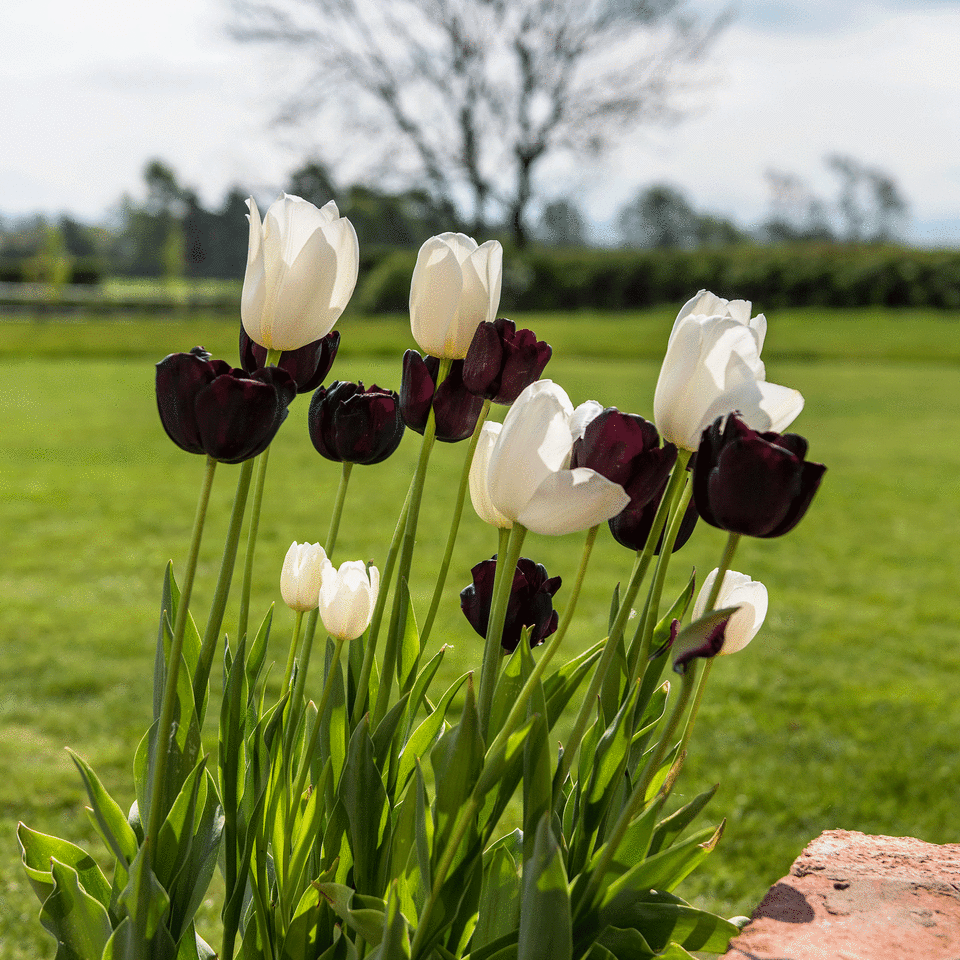
Helen adds that you’ll want to plant them in groups of around 8 for display, or, if you really want your garden to bloom, try planting 50-100 bulbs or more to give the effect of having a sea of flowers.'
2. Make your holes
Using your trowel, drill or a bulb auger, you'll want to make holes in the soil around 2-3 times the depth of the bulb.
'For example, a 2cm crocus bulb should be 4-6cm deep, and a 5cm daffodil bulb should be 10-15cm deep,' says Dan.
3. Get planting
Once your holes are in place, it's time to start planting.
'Pop the bulb at the bottom of the hole with the tip pointed upwards,' says Helen. 'Then, gently fill the soil back in.'
If you want to maximise impact, Dan suggests that you 'plant in drifts and groups – or, for a naturalistic effect, scatter the bulbs and plant them as and where they fall.'
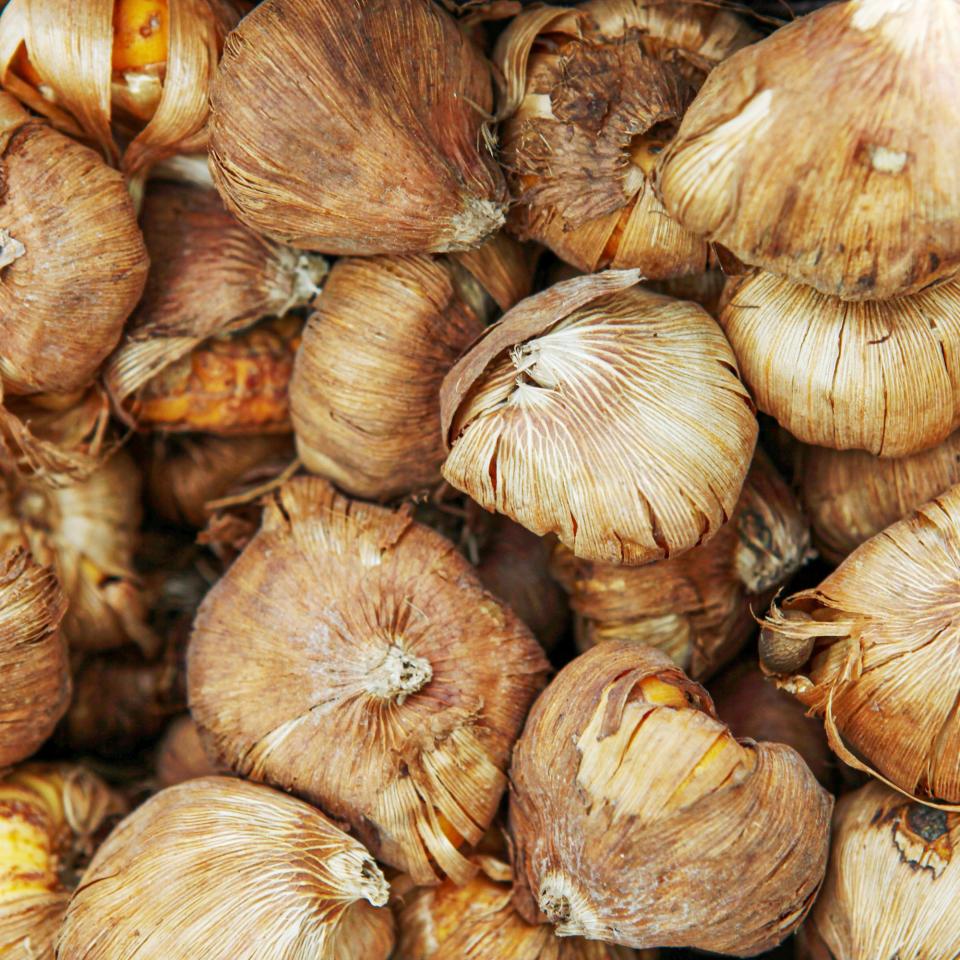
Helen adds that, if the soil is dry, you should 'make sure to give them some water after planting.'
Just be careful not to overwater them: you want the soil to be moist, not boggy.
4. Play the waiting game
Have you ever heard the phrase 'patience is a virtue'? There's never been a truer sentiment when it comes to planting bulbs in grass.
'Your bulbs will begin to sprout and grow through the rest of autumn and winter,' says Helen.
'However, you shouldn't expect to see your bulbs start blooming until some time between February and April.'
Hey, at least it gives us something to look forward to in the new year!
Can you plant bulbs in a lawn?
You can absolutely plant bulbs in a lawn, and to great effect! Find a sunny spot that isn't too close to garden paths (you don't want your bulbs to be trodden on too much), and get planting.
'Just remember to let the foliage die down naturally before continuing to mow the lawn,' says Dan.
When should I buy and plant bulbs?
There are now many reputable bulb dealers online, but garden centres and nurseries will also stock a good variety of spring bulbs throughout the autumn.
'Later in the winter you can also buy certain bulbs "in the green" and plant them straight into the garden or grass,' says Dan, noting that this works well for snowdrops and aconites.
Bulbs can be planted in containers, borders, bulb lasagnes, or even directly into your grass.
'When thinking about what you want, consider that displays look better in clumps or drifts rather than individual bulbs spread out to thinly and planting multiple varieties that flower at different times will extend the period of interest,' advises Dan.
'You should also consider that after flowering it is best practice to leave the foliage to die down naturally before continuing to mow the lawn for the rest of the summer. For this reason, spring bulbs can also fit into a small meadow area very nicely.'
What bulbs can I plant this autumn?
'You can get creative with the different types of bulbs you can plant,' says Helen, revealing her pick of the most beautiful spring-flowering bulbs you can plant between September and November:
1. Tulips
2. Daffodils
3. Hyacinths
4. Crocus
5. Bluebells
6. Alliums
7. Iris reticulata
8. Winter aconites
9. Snowdrops
'And it needn’t be expensive,' she adds. 'You can often buy a packet of 300 bulbs for around £15.'

